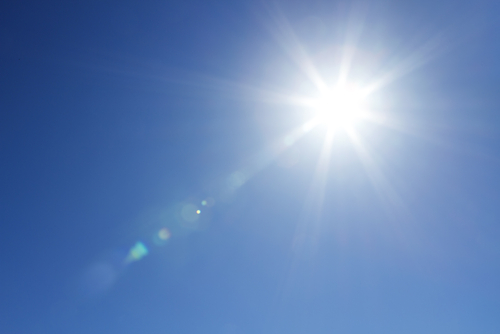You may have noticed that some forecasts for UV in the UK are indicating low to moderate levels, however there is a possibility that the levels may in fact be much higher than this of late. This is due to an ozone anomaly affecting the UK at the moment where levels are noticeably lower than normal. This is quite normal and similar events have occurred previously around this time of the year. The Met Office are confident that the levels should be no higher than those of a sunny day in June.
The main factors affecting the strength of UV radiation reaching the Earth’s surface are:
- The elevation angle (height) of the sun in the sky
- The amount of cloud, dust and pollution in the atmosphere
- The amount of ozone gas in the stratosphere
The presence of ozone in the stratosphere is important because it absorbs much of the UV radiation before it reaches ground level. Our UV model currently accounts for sun angle and forecast cloud amounts, but uses a “climatological” value (i.e. the average concentration for this time of year over the UK) to estimate the total ozone concentration.
During the dark polar winter, the concentration of ozone in the upper atmosphere over the pole typically decreases because sunlight is a critical ingredient in making ozone in the first place. At the same time the circulation of air around the North Pole keeps all this low ozone air at higher latitudes near the pole. In March and April, as the sun moves north, this polar circulation begins to break down and occasionally allows pockets of low ozone air to break away. These can sometimes pass over the UK. In these situations there will be less ozone in the high atmosphere available to absorb the UV compared to the average amount used in our forecasts. This means that the UV index could be higher than currently indicated in our forecasts particularly if forecast cloud amounts are low. We do round-up our UV values but due to this low ozone event, the UV forecast can still be lower than the actual levels. We are currently exploring ways to incorporate low ozone events such as this into our models to improve our UV forecasts.
It is important that, if you are in an area that is particularly sunny over the next few days, you take steps to ensure that you and your family are protected from these increased UV levels.
During the next few weeks, the Met Office will continue to keep an eye on these low ozone events (which can be seen in satellite data) in order to warn the public when they are happening.
© Met Office






